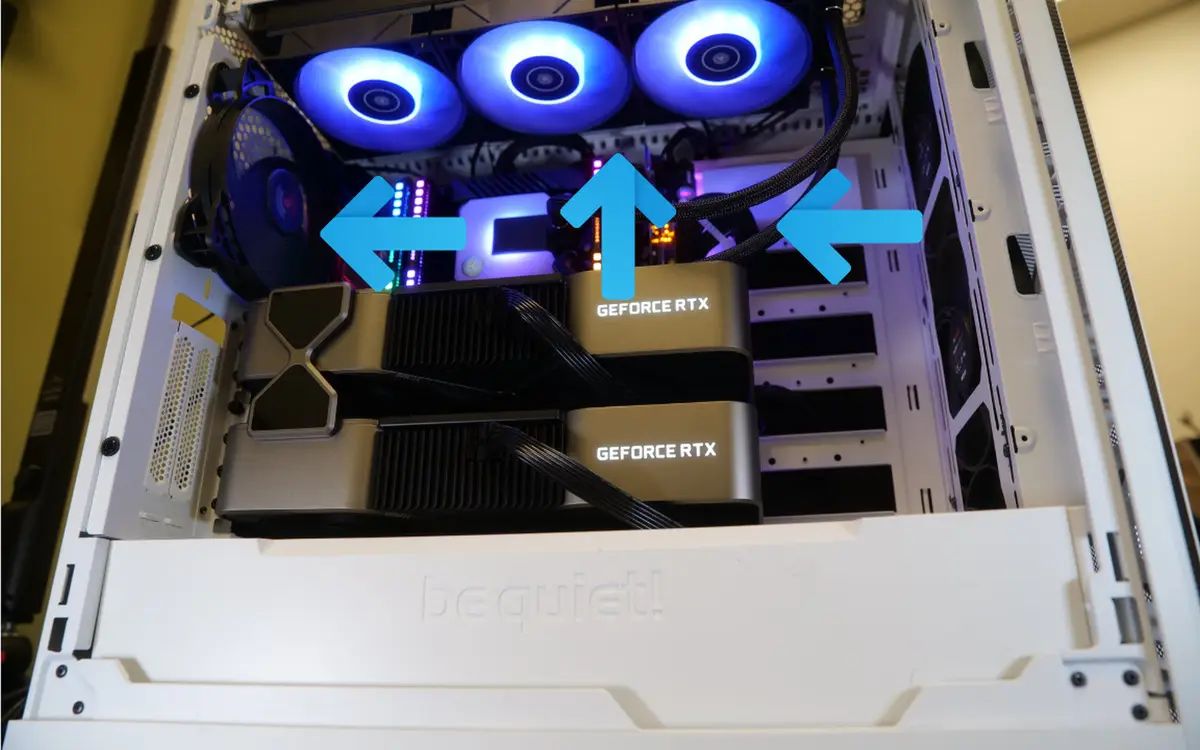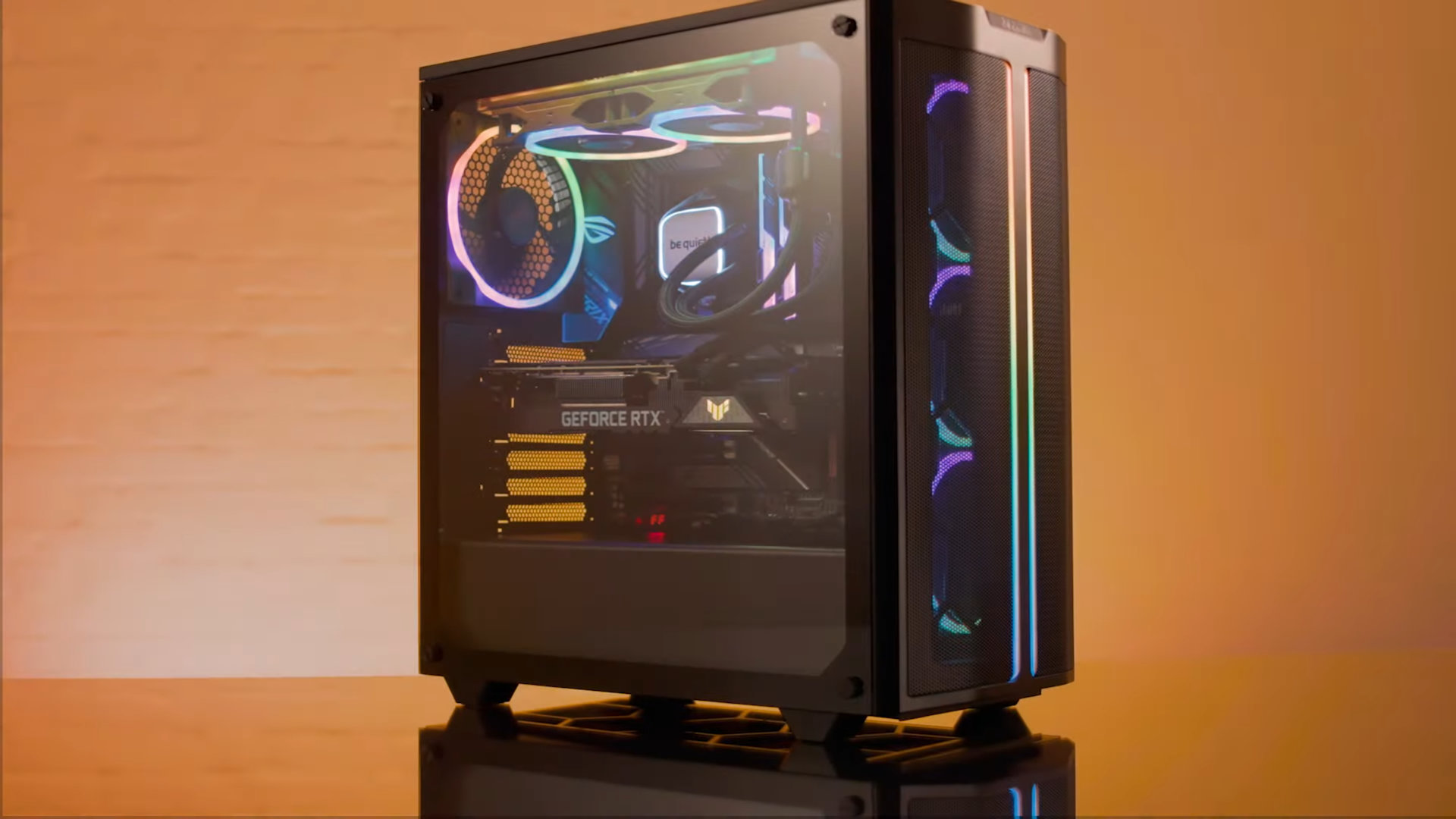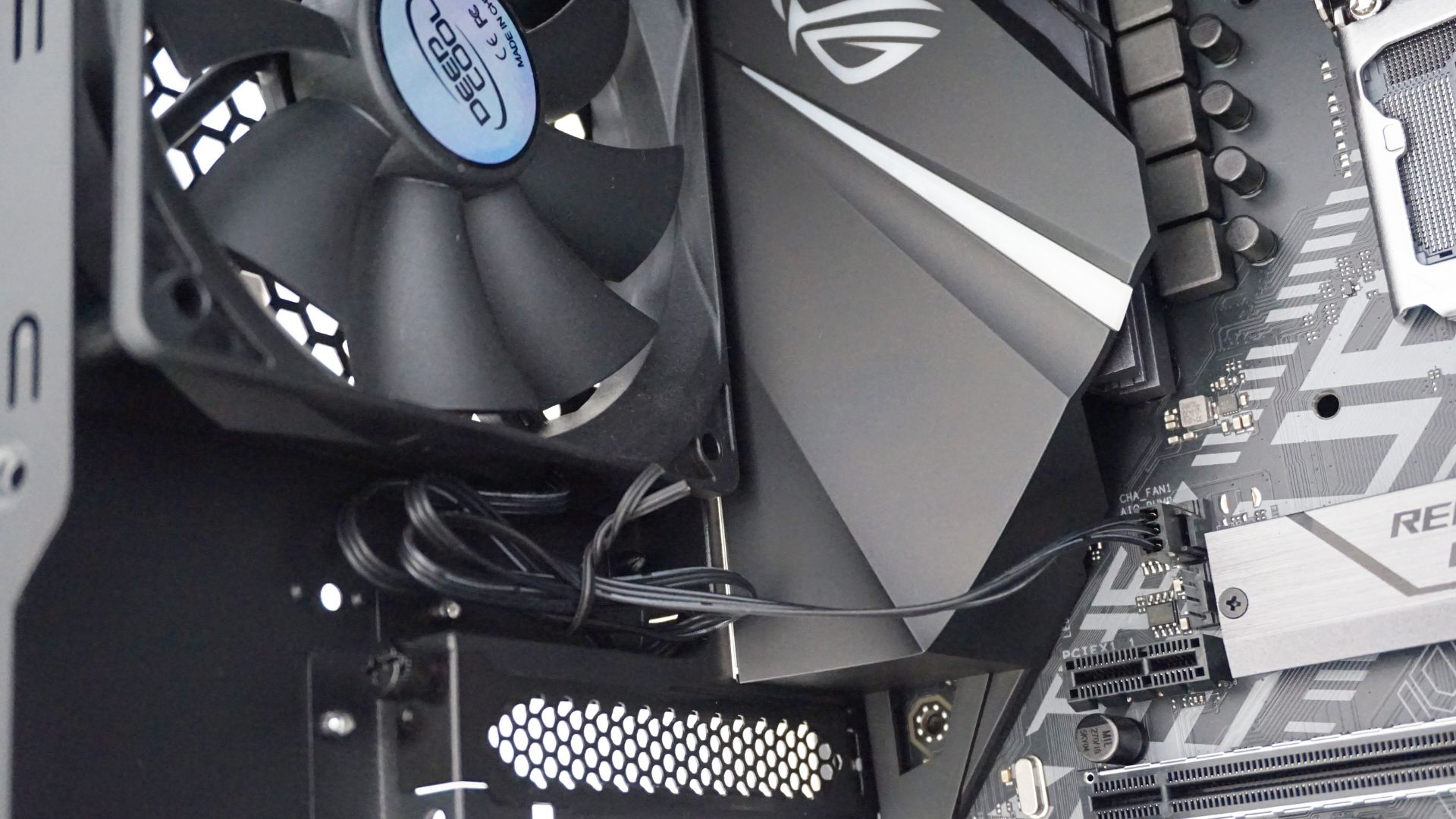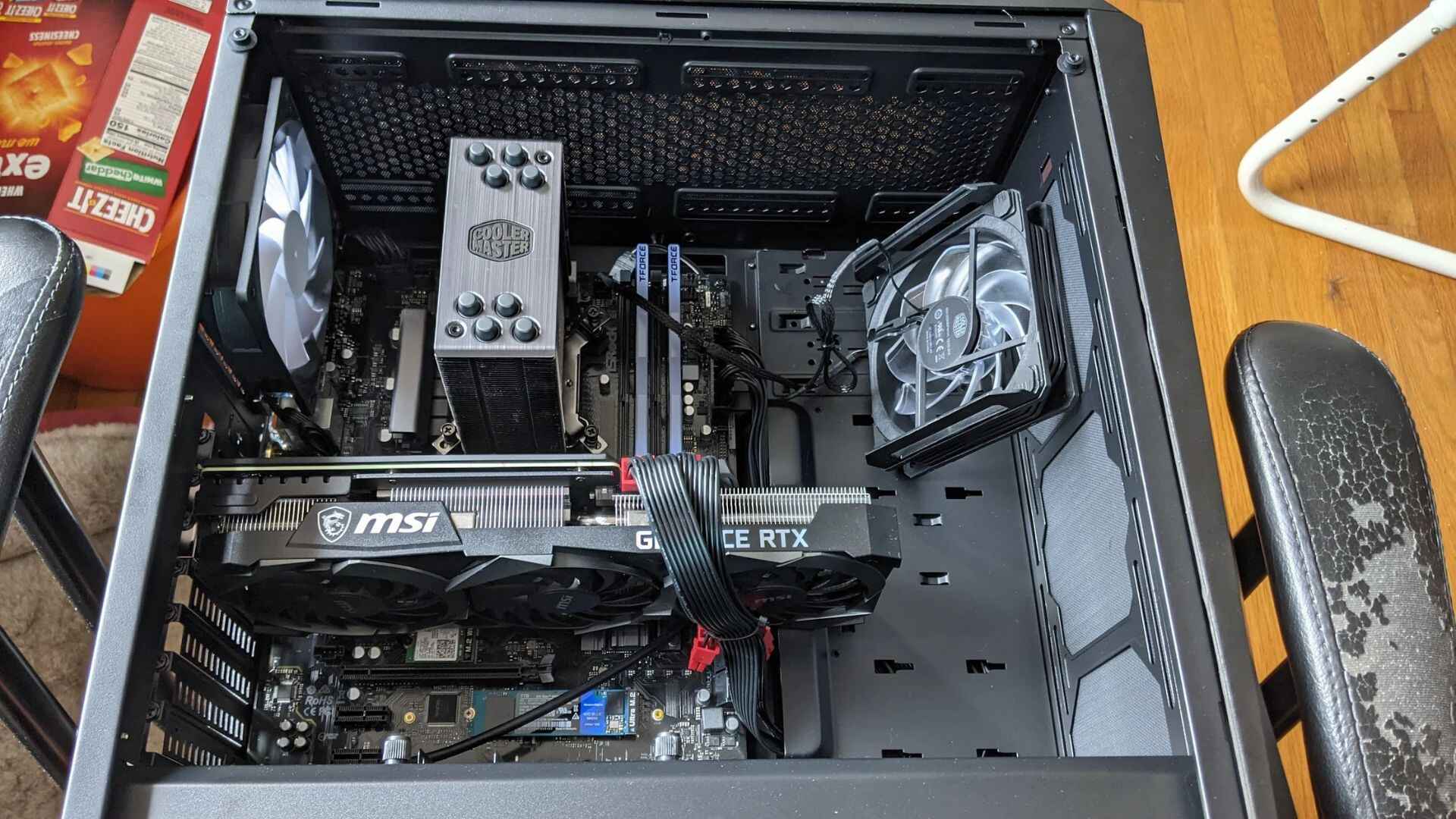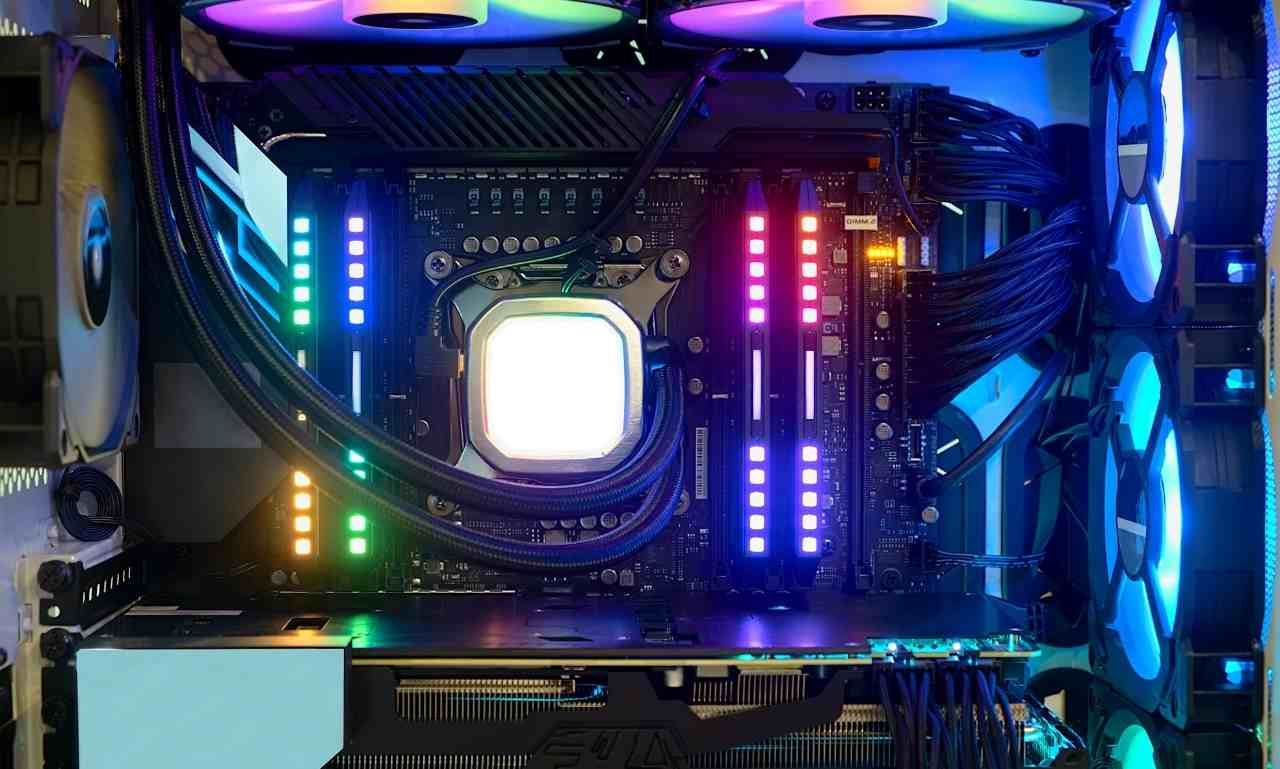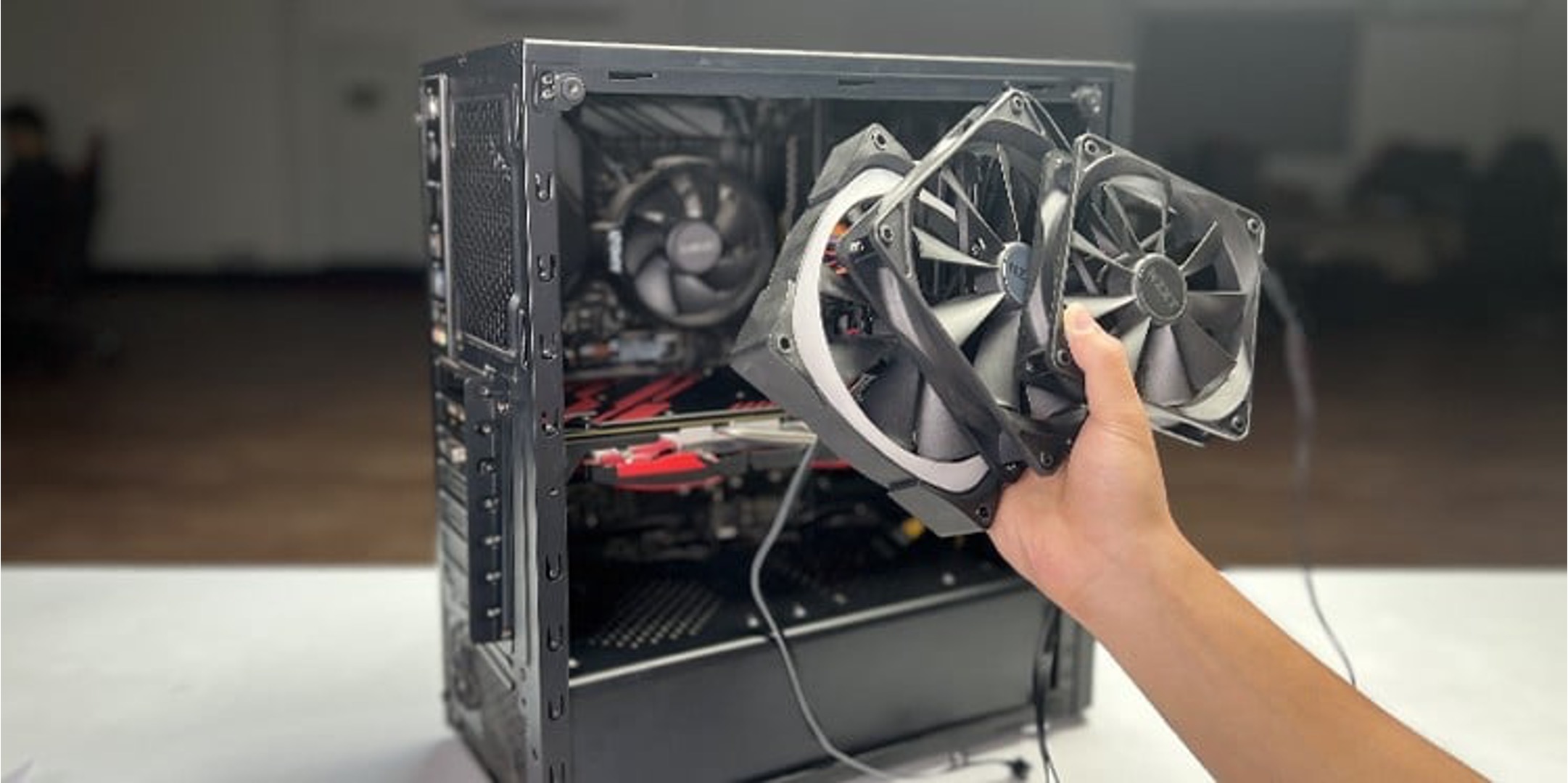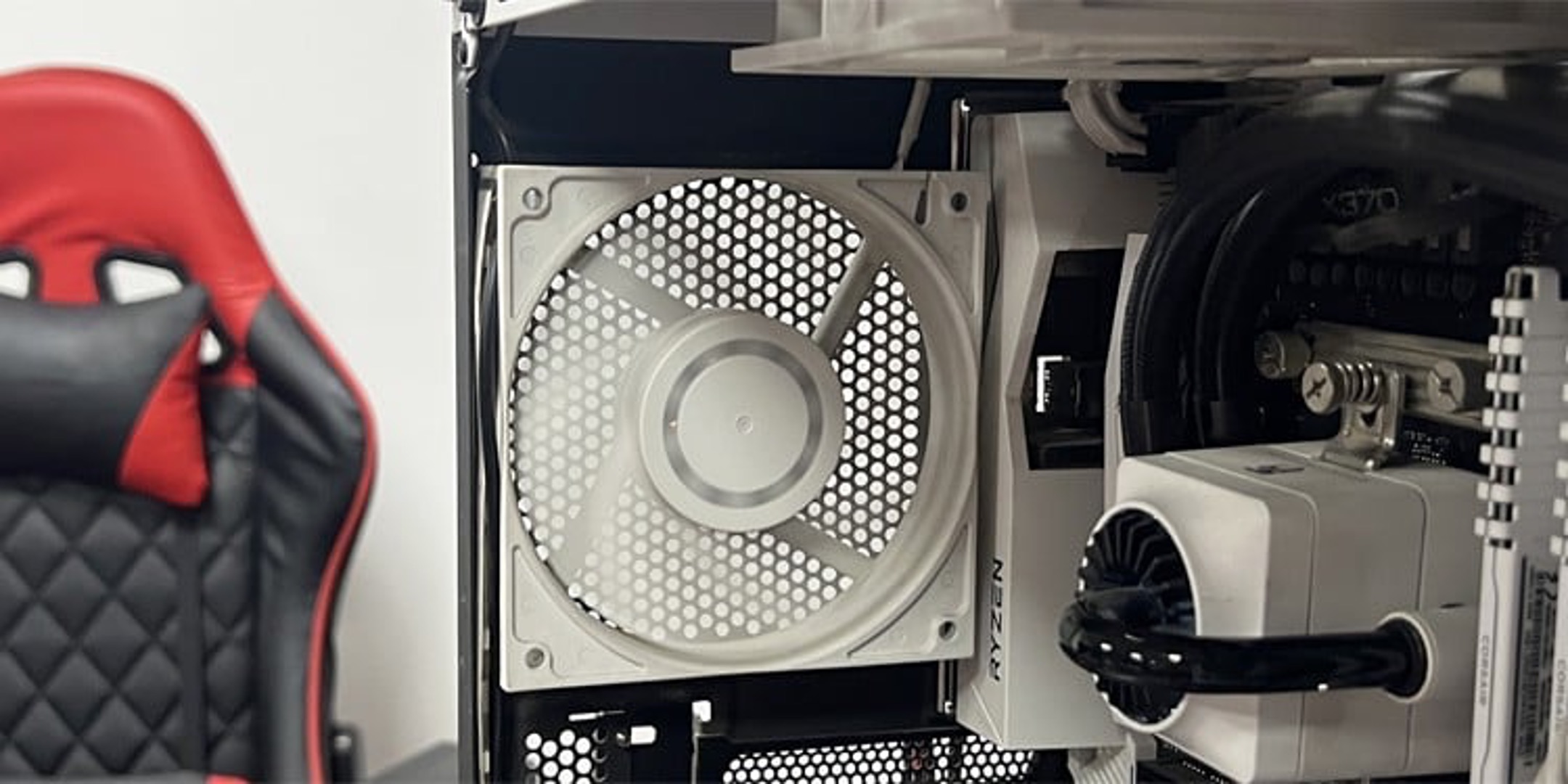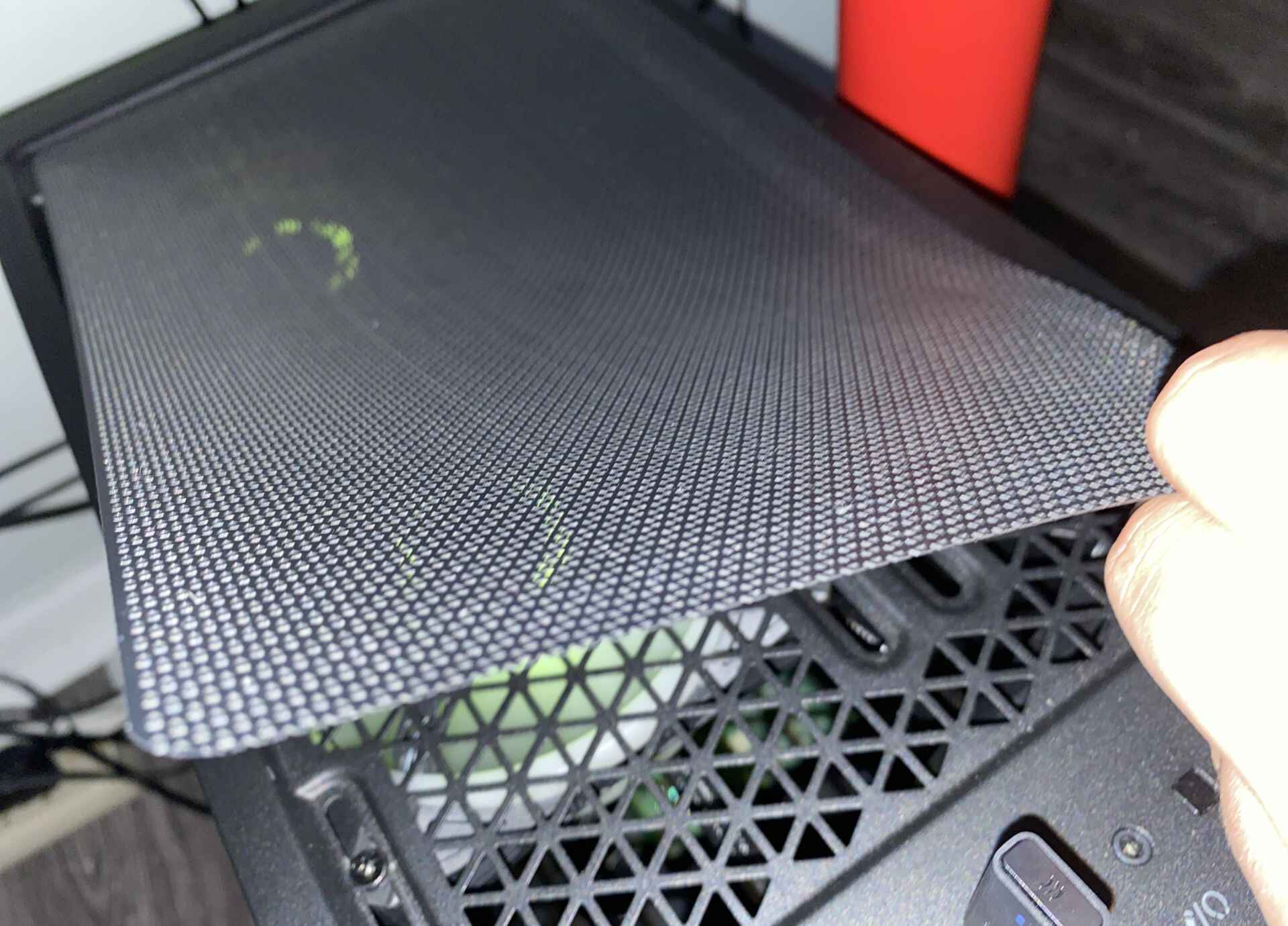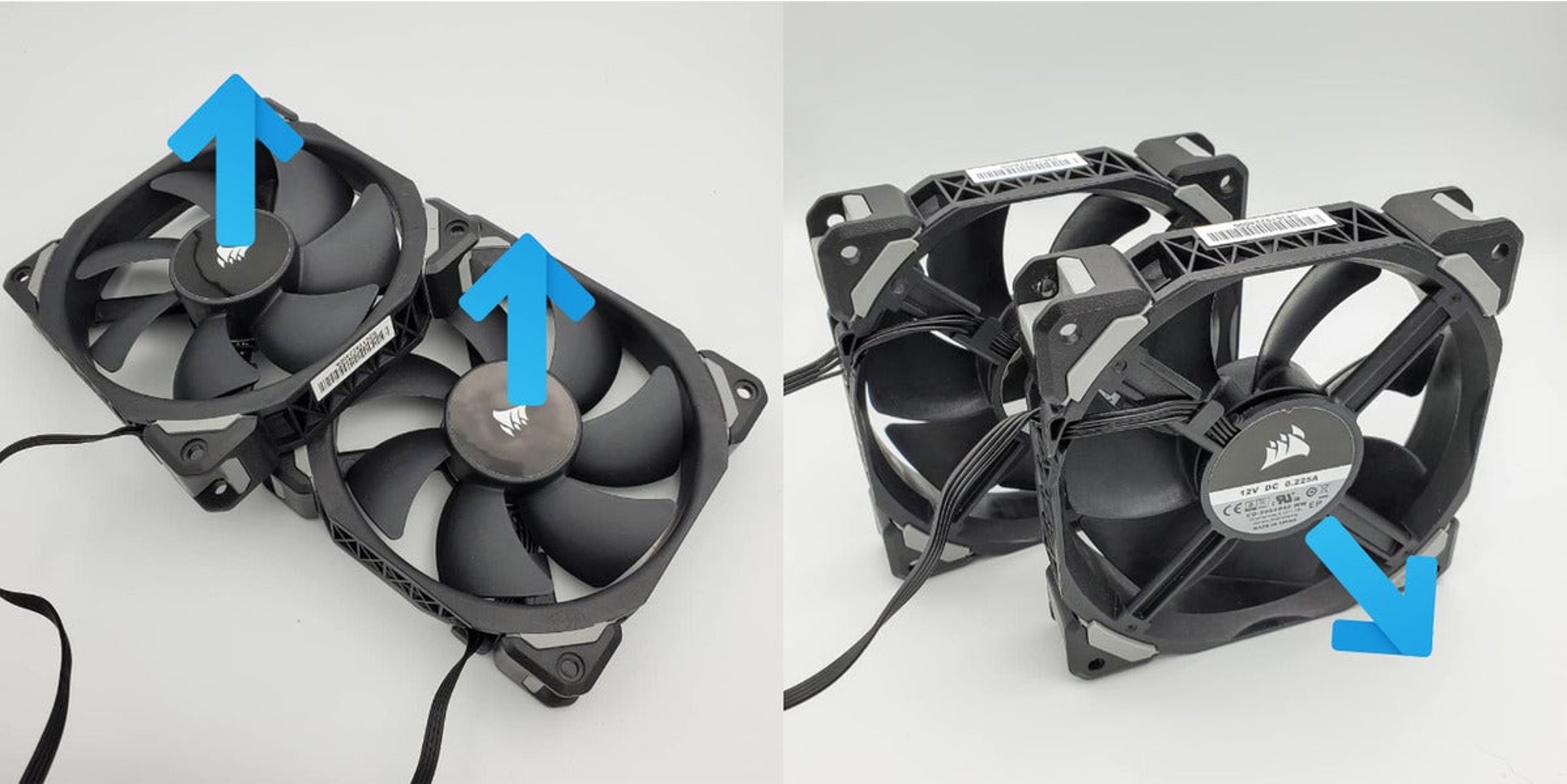Introduction
When it comes to building a gaming or high-performance computer, one of the crucial factors to consider is proper airflow within the PC case. Adequate airflow helps to keep the components cool and prevent overheating, which can lead to reduced performance and even hardware failure. One of the key elements in achieving optimal airflow is the placement and types of intakes in the PC case.
In this article, we will explore the different types of intakes available in PC cases and discuss their benefits and considerations. From front intakes to top, bottom, and side intakes, each has its own unique advantages when it comes to cooling the PC components.
By understanding the different intake options and considering factors such as dust filtration, noise levels, and overall airflow management, you can make informed decisions when selecting a PC case for your specific needs.
So, if you’re curious about how many intakes you need on a PC case, keep reading to discover the importance of airflow and the various types of intakes that play a crucial role in keeping your computer cool and performing at its best.
The Importance of Airflow in PC Cases
Adequate airflow is essential for the efficient functioning and longevity of a PC. When components like the CPU and GPU generate heat during operation, proper airflow ensures that the hot air is expelled and cool air is drawn in to maintain optimal temperatures. Without sufficient airflow, the heat can build up, leading to thermal throttling, reduced performance, and potential damage to the hardware.
Proper airflow also helps to prevent the accumulation of dust and debris inside the PC case. Dust particles can obstruct the fans and heat sinks, impeding their effectiveness and causing the components to overheat. Over time, this can lead to hardware failure and costly repairs.
To ensure adequate airflow, PC cases are designed with specific intake areas that allow fresh air to enter and cool the components. These intake areas may vary depending on the case design and manufacturer, but common locations include the front, top, bottom, and sides of the case.
By strategically placing intakes in these areas, the PC case can achieve efficient airflow that effectively cools the components. Additionally, certain cases feature specialized fans or intake vents that enhance airflow and optimize cooling performance.
When considering airflow, it is important to strike a balance between intake and exhaust. An equal or slightly positive air pressure inside the case helps to prevent dust from entering through unfiltered gaps or openings. Filtered intakes also play a vital role in capturing dust particles before they enter the case, maintaining cleanliness and reducing the need for frequent cleaning.
Overall, proper airflow is crucial for maintaining the stability, performance, and longevity of a PC. By ensuring a consistent flow of cool air and expelling hot air efficiently, you can prevent overheating, extend the lifespan of your components, and enjoy optimal performance during intense gaming sessions or demanding tasks.
Types of Intakes in PC Cases
PC cases offer various types of intake areas to facilitate effective airflow and cooling. Each type serves a specific purpose and can be strategically utilized based on the case design and component requirements. Let’s explore the different types of intakes commonly found in PC cases:
- Front Intakes: Many PC cases feature a front intake area where fans or vents are positioned to draw cool air into the case. The front intake is often the primary source of fresh air and is crucial for cooling components such as the CPU and GPU. Having spacious front intakes with mesh or filtered panels allows for better airflow and dust prevention.
- Top Intakes: Some PC cases offer top intake areas for additional cooling. These intakes are particularly useful for expelling hot air that rises within the case. By positioning fans or vents at the top, cool air can be drawn in while hot air escapes, helping to maintain lower temperatures for the components.
- Bottom Intakes: In certain cases, there are bottom intake areas that provide an alternative source of cool air. These intakes are often utilized when the PC case is placed on a hard surface or elevated above the ground, allowing cool air to be drawn from underneath the case.
- Side Intakes: Some PC cases have side intake areas that offer additional airflow options. These intakes are positioned on the side panel of the case and can be beneficial for cooling specific components, such as graphics cards or storage drives, by directing cool air directly onto them.
It’s important to note that not all PC cases will have all types of intakes mentioned above. The availability and effectiveness of certain intake types may vary depending on the case model and manufacturer. When choosing a PC case, consider the specific cooling requirements of your components and choose a case with intakes that align with those needs.
In addition to the types mentioned above, some PC cases come with specialized intake designs, such as front-panel fans with high airflow capacity or unique vent placements. These features are designed to optimize cooling performance and maintain lower temperatures during demanding usage scenarios.
By understanding the different types of intakes available and their respective benefits, you can select a PC case that offers the necessary airflow and cooling capabilities to keep your components operating at their best.
Front Intakes
Front intakes play a crucial role in PC cases as they are primarily responsible for drawing cool air into the system. They are strategically positioned at the front of the case, facing the user, and are often equipped with fans or mesh panels to maximize airflow.
The placement of front intakes allows for direct airflow to the most heat-generating components, such as the CPU and GPU. As these components often require efficient cooling to prevent overheating, having strong and unobstructed front intakes is essential.
Front intakes are typically equipped with fans that pull cool air from outside the case and direct it towards the interior. The number and size of fans can vary depending on the case model and design. Some cases may have multiple fans in the front, while others may have a single larger fan. Many PC cases also offer the flexibility to install additional fans in the front to improve airflow further.
To prevent dust and debris from entering the case, front intakes are often fitted with dust filters. These filters help to trap dust particles and prevent them from accumulating on the internal components. Regular cleaning or replacing of these filters can help maintain proper airflow and prevent the buildup of dust within the system.
When selecting a PC case, it’s important to consider the design and effectiveness of the front intakes. Look for cases with spacious and well-ventilated front panels that allow for maximum airflow. Additionally, cases with easily removable and washable dust filters make maintenance more convenient.
Front intakes also contribute to the overall aesthetics of the PC. Many cases offer stylish designs with LED lighting or tempered glass panels on the front, allowing for a visually appealing and immersive experience.
In summary, front intakes are a critical component of PC cases, ensuring the flow of cool air to crucial components. With proper placement, fan configuration, and dust filtration, front intakes help maintain optimal temperatures, prevent overheating, and extend the lifespan of the hardware.
Top Intakes
In addition to front intakes, some PC cases also feature top intakes which provide an additional source of cool air and aid in expelling hot air. The placement of these intakes at the top of the case allows for efficient heat dissipation and can help maintain lower temperatures in the system.
Top intakes are particularly useful in setups where the CPU and GPU generate a significant amount of heat. The hot air tends to rise within the case, and by placing fans or vents at the top, cool air can be drawn in while hot air is expelled. This helps to prevent the buildup of heat and maintain optimal operating temperatures for the components.
The number and size of top intakes can vary depending on the case design. Some cases may have a single large exhaust fan at the top, while others may feature multiple smaller fans or vented areas. The choice of fan configuration depends on the specific cooling requirements and airflow management needs.
When utilizing top intakes, it is crucial to consider the balance between intake and exhaust. If the number of intake fans at the top exceeds the exhaust fans at the rear or top rear, it can lead to a positive air pressure within the case. This positive pressure helps to minimize dust accumulation by pushing air out through unfiltered gaps or openings.
It is essential to note that top intakes may not be suitable for all setups. In cases where the PC is placed under a desk or in an enclosed space, top intakes might not be as effective. Limited clearance above the case can restrict the intake of cool air, leading to higher temperatures inside the case.
When considering a PC case with top intakes, look for models that offer filtered vent areas or easy-to-remove dust filters to prevent the buildup of dust and debris. Proper maintenance of these filters is crucial to ensure optimum airflow and cooling efficiency.
Overall, top intakes provide an additional means of cooling and heat dissipation in PC cases. By drawing cool air in and expelling hot air, they contribute to the overall temperature management of the system, preventing overheating and ensuring the longevity of the components.
Bottom Intakes
Some PC cases offer bottom intakes as a unique feature to draw in cool air and improve the overall airflow within the system. Positioned at the bottom of the case, these intakes provide an alternative source of fresh air and can help in keeping the components cool.
Bottom intakes are particularly beneficial when the PC case is placed on a hard surface or elevated above the ground. By having intakes at the bottom, the case can effectively draw in cool air from underneath. This helps prevent the intake of warm air that may be lingering around the case when it is placed directly on a carpeted or dusty surface.
When utilizing bottom intakes, it’s essential to ensure proper clearance for adequate airflow. Many cases have raised feet or mesh panels at the bottom to allow for sufficient ventilation. This clearance helps prevent the intake area from being obstructed, ensuring the free flow of cool air to the components.
However, it’s important to note that the effectiveness of bottom intakes may vary depending on the case design and the environment in which the PC is placed. In some setups, where the PC is placed on a desk or an elevated platform with ample clearance, the impact of bottom intakes may be limited.
One important consideration with bottom intakes is dust management. As cool air is drawn in from the bottom, it increases the risk of pulling in dust and debris from the surroundings. To address this, many PC cases with bottom intakes include dust filters or removable panels to prevent the accumulation of dust inside the system. Regular cleaning and maintenance of these filters are necessary to ensure proper airflow and cooling efficiency.
When choosing a PC case with bottom intakes, you should look for models that offer sufficient clearance, adequate ventilation, and effective dust management features. By utilizing bottom intakes, you can enhance the overall cooling performance and minimize the risk of overheating in your PC.
Side Intakes
Side intakes are a unique type of intake found in some PC cases, offering an additional source of cool air and improved airflow management. Located on the side panel of the case, these intakes provide targeted cooling for specific components, such as graphics cards or storage drives, by directing fresh air directly onto them.
The placement of side intakes is especially beneficial for components that generate significant heat and would benefit from direct airflow. Graphics cards, in particular, can benefit greatly from side intakes, as they often have their own dedicated cooling systems. Side intakes help to supply cool air to the GPU fans or heat sinks, enhancing their cooling performance and prolonging their lifespan.
The effectiveness of side intakes may depend on the case design and the specific components being cooled. Some cases have perforated side panels with built-in fans, while others have vents or mesh patterns that facilitate airflow. When selecting a case with side intakes, consider the position of the components that would benefit from additional cooling and ensure that the case design allows for optimal airflow to those areas.
It is important to note that side intakes are not as common as front or top intakes in PC cases. Not all cases will have this feature, and in some situations, side intakes may not be necessary or practical. However, for setups with high-power components or heavy overclocking, side intakes can provide that extra cooling advantage.
One consideration with side intakes is the potential for increased noise levels. Since side intakes are positioned closer to the components, any fans or airflow noise may be more audible. If noise is a concern, look for cases that offer noise-dampening features or allow for quiet fan configurations.
Overall, side intakes offer targeted cooling for specific components and can be beneficial in optimizing the cooling performance of your PC. If you have high-power components or want to maximize cooling efficiency in specific areas, considering a PC case with side intakes may be worth exploring.
Important Factors to Consider
When it comes to selecting a PC case with the right intakes, there are several important factors to consider. These factors can significantly impact the overall cooling performance and airflow management within your system. Let’s explore some key considerations:
- Component Cooling Needs: Assess the cooling requirements of your components, such as the CPU, GPU, and storage drives. Components with higher power consumption or overclocking may require more effective cooling solutions, such as cases with multiple intakes or larger fans.
- Case Size and Compatibility: Ensure that the case’s dimensions and form factor are compatible with your components, including the motherboard size, GPU length, and CPU cooler height. A spacious case with ample room for airflow and cable management can facilitate better cooling and airflow management.
- Dust Filtration: Look for cases that feature dust filters on the intake areas. Dust accumulation can hinder airflow and lead to increased heat buildup. Removable and washable dust filters not only improve airflow but also simplify maintenance.
- Fan Configuration: Assess the number and size of fans that can be installed in the case. Some cases come with pre-installed fans, while others may have multiple mounting points for additional fans. Proper fan configuration, including intake and exhaust placement, is crucial for efficient airflow and cooling performance.
- Noise Levels: Consider the noise levels produced by the case fans and intakes. Higher fan speeds or inadequate noise dampening can result in louder operation. Look for cases that offer noise-reducing features or the ability to optimize fan speeds for a quieter computing experience.
- Cable Management: A well-organized cable management system allows for unobstructed airflow and prevents cables from interfering with the fans or blocking intake areas. Look for cases that provide ample routing options and tie-down points to ensure proper cable management.
- Aesthetics: While aesthetics may not directly affect cooling performance, they can enhance the overall visual appeal of your PC setup. Consider cases with appealing designs, tempered glass panels, or customizable RGB lighting to create a visually stunning gaming or workstation build.
By carefully considering these factors, you can select a PC case that meets your specific cooling needs and promotes optimal airflow management. Remember to prioritize the cooling requirements of your components and find a balance between performance, noise levels, and aesthetics for an enjoyable computing experience.
Conclusion
Proper airflow and effective cooling are crucial for maintaining the performance, stability, and longevity of a PC. When selecting a PC case, it’s important to consider the types of intakes available and how they contribute to optimal airflow management.
Front intakes play a key role in drawing cool air into the case and cooling essential components such as the CPU and GPU. Top intakes aid in expelling hot air and maintaining lower temperatures in the system. Bottom intakes provide an alternative source of cool air, especially when the case is placed on a hard surface or elevated above the ground. Side intakes offer directed cooling for specific components like graphics cards or storage drives.
Factors such as component cooling needs, case size and compatibility, dust filtration, fan configuration, noise levels, cable management, and aesthetics should all be considered when choosing a PC case with the right intakes. These factors collectively impact the airflow efficiency and cooling performance of your system.
By striking a balance between cooling performance, noise levels, and aesthetic appeal, you can find a PC case that meets your specific requirements. Remember to prioritize the cooling needs of your components and select a case with ample ventilation, dust filters, and proper fan placement to ensure optimal airflow and efficient heat dissipation.
With the right PC case and intakes, you can create a well-cooled and reliable system that delivers outstanding performance, even during intense gaming sessions or demanding tasks.







